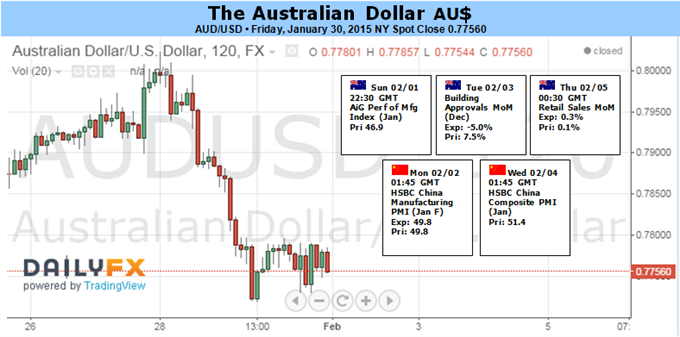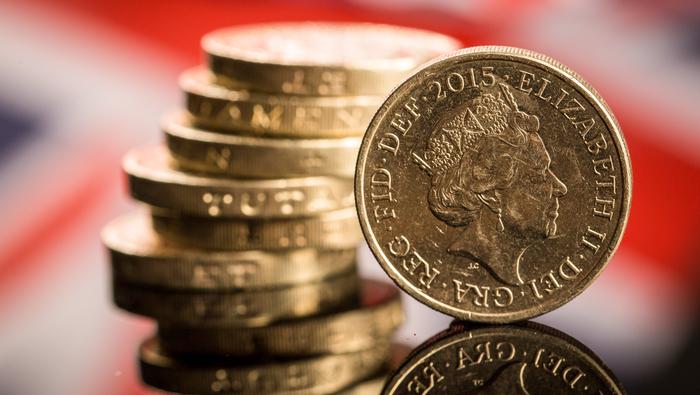
Fundamental Forecast for Australian Dollar: Neutral
- Oil-Driven Drop in Inflation Readings Fuels Interest Rate Cut Bets
- Australian Dollar May Bounce if RBA Opts Against Dovish Posture
- Help Find Key Australian Dollar Turning Points with DailyFX SSI
The Australian Dollar descended to the lowest level in nearly six years against its US counterpart last week. A deteriorating monetary policy outlook looked like the leading culprit behind the move: traders are now pricing in 61 basis points in easing over the coming 12 months (according to OIS-based estimates compiled by Credit Suisse), making for the most dovish lean in traders’ expectations since early May 2013.
Furthermore, investors seem increasingly convinced that the start of the easing cycle is already at hand, with the implied probability a 25 basis point reduction at next week’s RBA meeting swelling to 65 percent. That is the first central bank sit-down to carry a greater-than-even chance of a reduction in borrowing costs in 18 months.
Fading realized and expected inflation readings seem to be behind building rate hike bets. Data published last week showed the benchmark year-on-year CPI growth rate slowed to 1.7 percent in the fourth quarter, the weakest since mid-2012. Meanwhile, Australia’s one-year breakeven rate – a measure of expected inflation derived from bond yields – has tumbled to project prices will be expanding at a pace of less than 1 percent by early 2016. That is a far cry of the RBA’s 2-3 percent objective.
The likelihood that the central bank validates the markets’ pro-stimulus posturing depends on its view of the forces bearing down on inflation. Not surprisingly, a formative factor has been the sinking price of oil. Indeed, the aforementioned CPI report showed the “transport” sub-group of index accounted for the largest downdraft in the fourth quarter, of which the most significant contribution was made by a 6.8 percent slide in the price of automotive fuel.
Faced with similar circumstances, some central banks have appeared sanguine. The Federal Reserve and the Bank of England have both chalked up recent disinflation to transitory forces that don’t necessarily have a strong bearing on medium-term price stability. Others have gone the other way: the RBNZ conspicuously backed off the hawkish rhetoric on display as recently as December in last week’s policy announcement.
Leading surveys of activity growth in the manufacturing and services sectors point to some loss of momentum since the second half of 2014 but the economy’s overall trajectory seems to remain positive. Realized data outcomes have also increasingly outperformed relative to consensus forecasts since the last RBA outing in December. If this encourages the RBA to look through near-term price declines and fall in with the Fed/BOE side of the argument – catching markets off-guard with another neutral policy statement – a swift Aussie Dollar rebound is likely in the cards.





